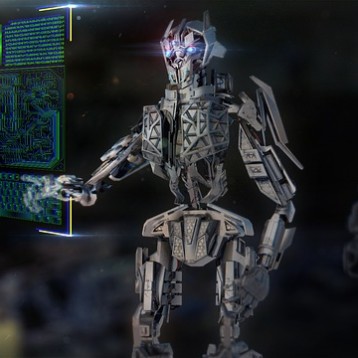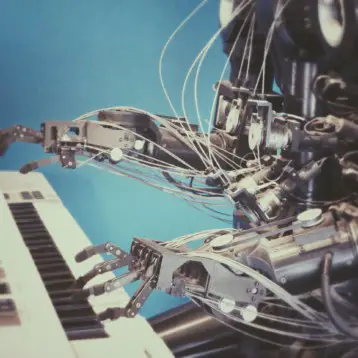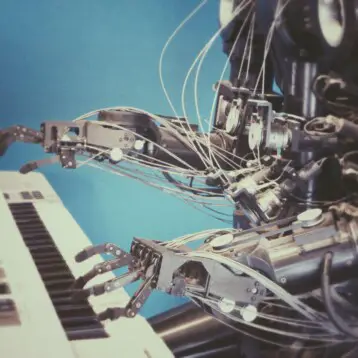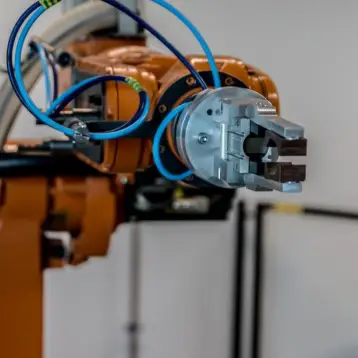Sea snakes live in water, and even terrestrial snakes sometimes show swimming abilities on the water’s surface. The structure of ACM-R5 enables it to mimic quite successfully this amphibious movement thanks to its joints, which consist of a universal joint and flexible bellow (which can be seen in black in the image); it was developed on the basis of the previous model HELIX, which was designed for research of spirochete-like helical swimming.
A universal joint plays the role of bones, and bellows take the role of an integument. This joint structure gives ACM-R5 the ability to form a smooth shape, which is important for effective locomotion. To be precise, the universal joint has one passive twist joint at the intersection point of two bending axis, which help to prevent mechanical interference with the bellows.
One of the main challenges the researchers faced was creating a wavelike motion. In order to do so, they equipped the ACM-R5 with paddles and passive wheels around the body. To generate propulsive force by undulation, the robot needs resistance, since it glides freely in tangential directions but cannot in normal directions. Thanks to the paddles and passive wheels, ACM-R5 obtains that characteristic both in water and on ground, as can be seen in this video.
ACM-R5 has an advanced control system. Each joint unit has a CPU, a battery, and motors so it can operate independently. Through communication lines each unit exchanges signals and automatically recognizes its number from the head, as well as how many units join the arrangement. The system’s dynamic structure gives operators the freedom to remove, add, and exchange units freely. Although ACM-R5 seems to have a promising future, its creators say that a large number of problems remain obstructing the realization of practical snake-like robots, both in software and hardware.
TFOT has also covered the OmniTread, a snake-like robot capable of climbing high vertical obstacles such as stairs, and the grasshopper inspired jumping robot, capable of jumping to a height of more than 27 times its body size. Another related TFOT story covers the Whegs series of robots, which use both wheels and legs to move at a relatively high speed and climb over obstacles.
For more information on the ACM-R5, see the Hirose-Fukushima Robotics Lab’s website.










